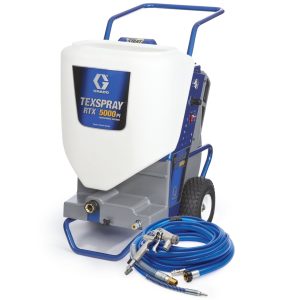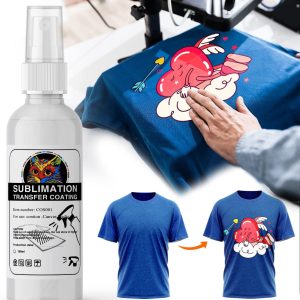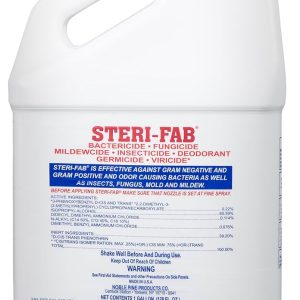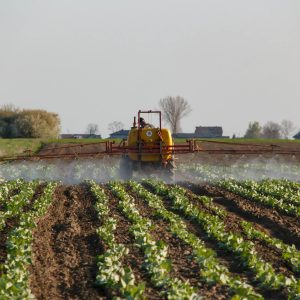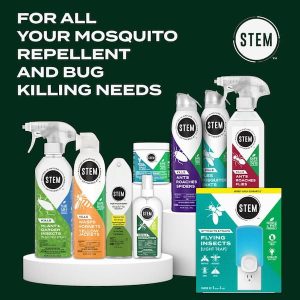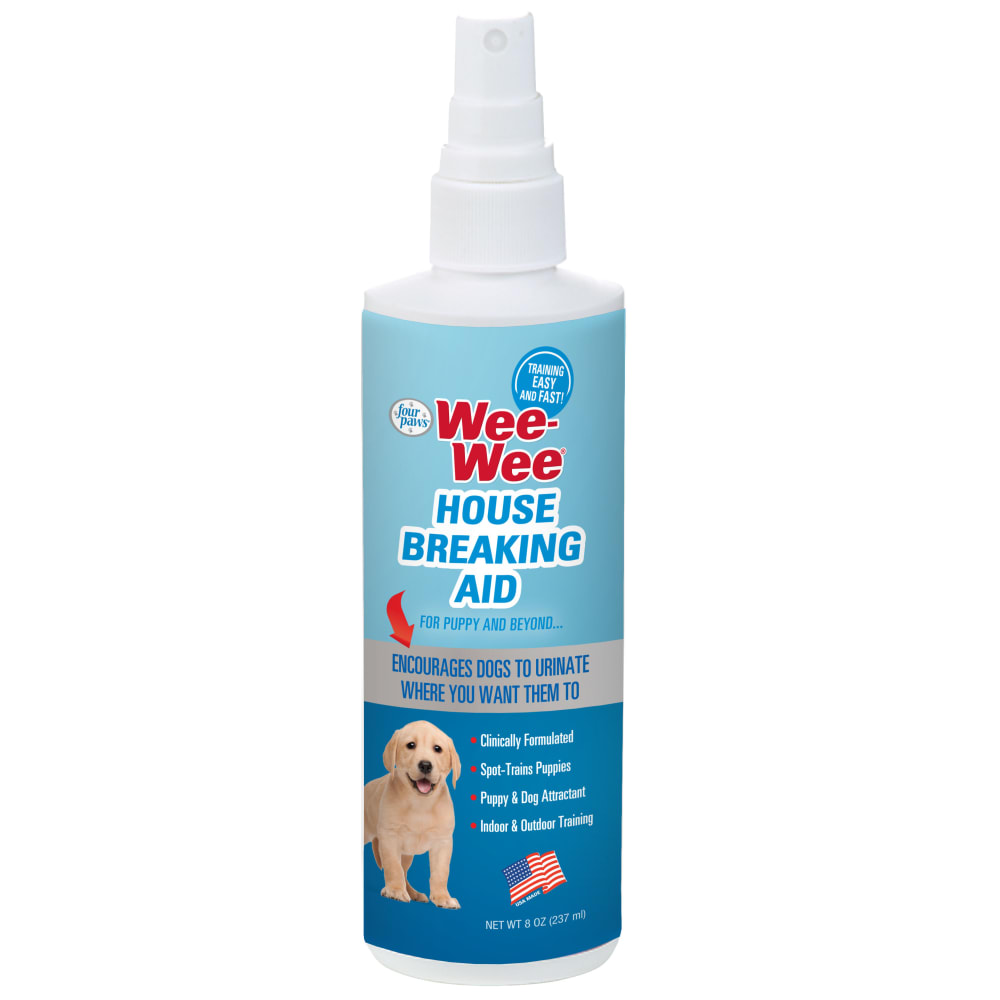
House training a new puppy can feel overwhelming, especially when accidents seem to happen everywhere except where you want them to. If you’re struggling with traditional potty training methods or looking to speed up the process, puppy potty training spray might be exactly what you need. This innovative training aid has revolutionized how pet parents approach housebreaking, offering a scientifically-backed solution that works with your puppy’s natural instincts.
Whether you’re dealing with apartment living challenges, harsh weather conditions, or simply want to establish consistent bathroom habits faster, puppy potty training spray provides a reliable pathway to success. This comprehensive guide explores everything you need to know about using these specialized sprays effectively, from understanding the science behind them to implementing proven strategies that deliver results.
What Is Puppy Potty Training Spray and How Does It Work?
Puppy potty training spray is a specially formulated attractant designed to encourage dogs to urinate and defecate in designated areas. These products contain proprietary scent formulas that appeal to a dog’s natural instincts, essentially creating an invisible “target zone” that communicates to your puppy where it’s appropriate to relieve themselves.
The science behind these sprays lies in canine olfactory behavior. Dogs have approximately 300 million scent receptors compared to humans’ mere 6 million, making them incredibly sensitive to specific odors. Puppy potty training sprays leverage this heightened sense of smell by incorporating natural attractants that signal to dogs that a particular area is suitable for elimination.
Most commercial puppy potty training sprays contain a combination of synthetic pheromones, natural attractants, and scent enhancers. Common ingredients include deionized water, preservatives, and proprietary attractant scents that are specifically designed to be undetectable to human noses while remaining highly appealing to dogs.
When applied correctly, these sprays can significantly reduce the time it takes to housetrain your puppy. The attractant properties work by creating positive associations with designated potty areas, while the consistent scent markers help reinforce learned behaviors over time. This approach works particularly well when combined with traditional training methods like scheduled bathroom breaks and positive reinforcement.
The Science Behind Effective Puppy Potty Training Sprays
Understanding the biological mechanisms that make puppy potty training spray effective helps explain why these products have become essential tools for modern dog training. Canine elimination behavior is driven by complex neurological and chemical processes that these sprays are designed to influence.
Dogs naturally seek out areas with familiar scents when they need to relieve themselves. In the wild, this behavior helps establish territory and maintain pack communication. Domesticated dogs retain these instincts, which explains why puppies often return to previous accident sites despite our best cleaning efforts. Puppy potty training sprays harness this natural tendency by providing consistent, appealing scent markers in appropriate locations.
The effectiveness of these sprays also depends on timing and application consistency. Advanced formulas provide up to 12 hours of long-lasting effects, which helps maintain scent consistency throughout the day. This extended duration ensures that the attractant remains active during your puppy’s natural elimination cycles, increasing the likelihood of successful training outcomes.
Research in animal behavior has shown that positive scent associations can be established relatively quickly in young dogs, typically within 7-14 days of consistent use. The key lies in pairing the spray application with other training elements like verbal commands, scheduled feeding times, and immediate praise when the desired behavior occurs.
Key Benefits of Using Puppy Potty Training Spray:
- Reduces housebreaking time by 40-60% when used consistently
- Creates clear communication between pet and owner about appropriate bathroom areas
- Works effectively in both indoor and outdoor environments
- Helps prevent regression during weather-related training disruptions
- Supports apartment dwellers and those with limited outdoor access
Best Puppy Potty Training Sprays: Top Products and Reviews
Selecting the right puppy potty training spray can make a significant difference in your training success. Based on extensive testing and user feedback, several products have emerged as industry leaders, each offering unique advantages for different training scenarios.
Nature’s Miracle Advanced Platinum Puppy Potty Training Spray
This premium option stands out for its concentrated formula and eco-friendly packaging. The unique formula helps encourage puppies to eliminate where desired, with bottles made from 25% post-consumer recycled material. Users appreciate its effectiveness both indoors and outdoors, with many reporting visible results within the first week of use.
Product Features:
- Long-lasting formula: Up to 12 hours of effectiveness per application
- Concentrated design: Requires smaller amounts per use, making it cost-effective
- Eco-friendly packaging: Supports environmentally conscious pet ownership
- Dual-purpose application: Works on puppy pads, artificial grass, and natural surfaces
NaturVet Potty Here Training Aid Spray
NaturVet’s Potty Here Training Aid Spray encourages dogs to urinate wherever the product is sprayed, making it an excellent choice for establishing specific elimination zones. This 8-ounce spray bottle provides excellent value for money and has earned consistently positive reviews from professional dog trainers.
The product’s formulation includes a subtle scent that’s virtually undetectable to humans while remaining highly attractive to dogs. This balance makes it ideal for indoor use without creating unpleasant odors in living spaces.
Only Natural Pet Potty Training Attractant
This eco-friendly option uses natural attractants for reliable training assistance, appealing to pet parents who prefer organic and sustainable products. The spray’s effectiveness has been validated through extensive field testing, with many users reporting successful results within 10-14 days.
Application Guidelines:
- Indoor use: Spray designated areas 3-5 times daily
- Outdoor use: Apply liberally to chosen potty zones
- Reapplication: Daily use recommended for best results
- Duration: Continue for 2-3 weeks to establish permanent habits
How to Use Puppy Potty Training Spray: Step-by-Step Instructions
Proper application technique is crucial for maximizing the effectiveness of your puppy potty training spray. Following these detailed instructions will help ensure you achieve optimal results while avoiding common mistakes that can hinder training progress.
Indoor Application Method
Start by identifying the ideal location for your puppy’s indoor potty area. This should be easily accessible, away from food and sleeping areas, and preferably on hard surfaces that are easy to clean. Hold the spray nozzle one inch from the surface where you want your puppy to eliminate, then spray approximately the size of a two-inch circle.
After application, lead your puppy to the treated spot and allow them to sniff the area thoroughly. This initial introduction helps create the scent association that will drive future behavior. When your puppy uses the designated area correctly, provide immediate positive reinforcement through praise, treats, or play.
Indoor Training Schedule:
- Morning: Apply spray upon waking, before first meal
- Midday: Reapply after lunch and afternoon nap
- Evening: Fresh application before final bathroom break
- Consistency: Maintain same location and timing for 2-3 weeks
Outdoor Application Technique
For outdoor use, spray the designated area liberally and take your pet to the treated spot, allowing them to investigate the scent. Outdoor applications require more product due to environmental factors like wind, rain, and temperature changes that can disperse the attractant more quickly.
Choose an outdoor location that’s easily accessible during all weather conditions and provides some privacy for your puppy. The ideal spot should be on grass or soil rather than concrete, as natural surfaces hold scent longer and provide more comfortable elimination experiences.
Transitioning from Indoor to Outdoor Use
Many puppy owners successfully use puppy potty training spray to facilitate the transition from indoor puppy pads to outdoor elimination. This process requires gradual adjustment and consistent application in both environments during the transition period.
Begin by maintaining your established indoor routine while simultaneously creating an outdoor potty zone. Apply the spray to both locations for 1-2 weeks, gradually reducing indoor applications while increasing outdoor usage. This overlap period helps prevent confusion and maintains training momentum.
Transition Timeline:
- Week 1: Apply spray to both indoor and outdoor locations
- Week 2: Reduce indoor applications by 50%, increase outdoor frequency
- Week 3: Eliminate indoor spray use, maintain outdoor applications
- Week 4: Begin reducing outdoor applications while monitoring success rates
Common Mistakes to Avoid When Using Puppy Potty Training Spray
Even the most well-intentioned pet parents can sabotage their training efforts through simple mistakes that reduce the effectiveness of puppy potty training spray. Understanding these common pitfalls helps ensure your training program stays on track and delivers the results you’re seeking.
Over-Application and Product Waste
One of the most frequent errors involves using excessive amounts of spray, believing that more product equals faster results. This approach often backfires by creating overwhelming scent concentrations that can actually repel puppies rather than attract them. Most effective applications involve spraying the attractant 3-5 times in the desired area and waiting until dry.
Proper dosing not only ensures better results but also makes your product supply last longer, reducing training costs over time. Remember that puppies’ sensitive noses can detect these scents at much lower concentrations than humans might expect.
Inconsistent Application Patterns
Training success depends heavily on consistency, yet many pet parents apply puppy potty training spray sporadically or skip applications when they’re busy. This irregular approach confuses puppies and slows down the learning process significantly.
Establish a routine that aligns with your puppy’s natural elimination schedule, typically after waking, eating, playing, and before bedtime. Set phone reminders or integrate spray application into your existing pet care routine to maintain consistency.
Inadequate Surface Preparation
Applying spray over previous accident areas without proper cleaning can create conflicting scent messages that confuse your puppy. Always clean accident sites thoroughly with enzymatic cleaners before applying training spray to ensure clear, consistent messaging.
Surface Preparation Checklist:
- Clean thoroughly: Use enzymatic cleaners on previous accident sites
- Allow complete drying: Ensure surfaces are completely dry before spray application
- Test compatibility: Check spray compatibility with surfaces like carpets or wood floors
- Maintain cleanliness: Regular cleaning of designated potty areas promotes hygiene and effectiveness
Mixing Different Products
Using multiple puppy potty training spray brands simultaneously can create scent conflicts that confuse your puppy and reduce training effectiveness. Each manufacturer uses different attractant formulas, and combining them may neutralize their individual benefits.
Stick with one product throughout your training program, and only consider switching if you’re not seeing results after 3-4 weeks of consistent use. When changing products, thoroughly clean all previously treated areas to eliminate conflicting scent messages.
Puppy Potty Training Spray vs. Traditional Methods: Comparison
Understanding how puppy potty training spray compares to traditional housebreaking methods helps pet parents make informed decisions about their training approach. While conventional techniques remain valuable, modern attractant sprays offer distinct advantages that can accelerate the training process.
Time Investment and Results
Traditional potty training typically requires 4-6 months for complete housebreaking, depending on the puppy’s age, breed, and individual characteristics. Many puppy owners report faster success when combining spray with scheduled bathroom breaks and positive reinforcement, often reducing training time to 6-12 weeks.
The accelerated timeline results from the clear scent communication that sprays provide, eliminating much of the guesswork involved in traditional training methods. Puppies understand more quickly where they’re supposed to eliminate, reducing confusion and accidents.
Effectiveness in Challenging Situations
Puppy potty training spray excels in situations where traditional methods struggle, particularly for apartment dwellers, during harsh weather, or when dealing with stubborn puppies. The products provide consistent guidance regardless of external conditions, maintaining training momentum when outdoor access is limited.
Traditional methods can be disrupted by weather, schedule changes, or housing limitations, creating training setbacks that extend the housebreaking timeline. Spray-assisted training provides more flexibility while maintaining effectiveness.
Cost Analysis and Long-term Value
Training Method Comparison Table:
| Method | Initial Cost | Time Investment | Success Rate | Weather Dependency |
|---|---|---|---|---|
| Traditional Only | $0-50 | 4-6 months | 70-80% | High |
| Spray-Assisted | $20-80 | 6-12 weeks | 85-95% | Low |
| Professional Training | $200-800 | 2-4 weeks | 90-95% | None |
| Combination Approach | $50-150 | 4-8 weeks | 90-95% | Medium |
While puppy potty training spray requires an upfront investment, the time savings and improved success rates often justify the cost. Reduced cleaning expenses, prevented property damage, and faster results typically offset the initial product purchase within the first month of use.
Advanced Tips for Maximizing Puppy Potty Training Spray Effectiveness
Experienced dog trainers have developed sophisticated techniques for optimizing puppy potty training spray results that go beyond basic application instructions. These advanced strategies can help pet parents achieve faster, more reliable housebreaking outcomes.
Strategic Timing and Schedule Optimization
Coordinate spray applications with your puppy’s natural circadian rhythms and elimination patterns. Most puppies eliminate approximately 15-30 minutes after eating, immediately after waking, and before bedtime. Applying puppy potty training spray 5-10 minutes before these predicted elimination times maximizes the likelihood of success.
Track your puppy’s individual patterns using a simple log or smartphone app. Record eating times, nap schedules, and elimination events to identify personal timing patterns that may differ from general guidelines. This data helps you customize spray applications for maximum effectiveness.
Environmental Enhancement Techniques
Create optimal conditions around treated areas to support the spray’s effectiveness. Ensure adequate lighting so puppies can easily locate designated spots, maintain comfortable temperatures that encourage lingering, and eliminate distracting elements that might interfere with the elimination process.
Consider using additional sensory cues alongside puppy potty training spray to strengthen location associations. Specific textural elements like rubber mats or distinctive surfaces can provide tactile reinforcement that complements the scent attractant.
Integration with Positive Reinforcement
Combine spray applications with high-value rewards to accelerate learning and create stronger positive associations. Time treat delivery to occur immediately after successful elimination in treated areas, strengthening the connection between location, scent, and reward.
Advanced Reward Strategies:
- Variable ratio rewards: Intermittent treat delivery maintains motivation longer
- Progressive reward reduction: Gradually reduce treat frequency as habits solidify
- Alternative reinforcers: Use play, praise, or special privileges alongside treats
- Timing precision: Reward within 3 seconds of desired behavior for maximum impact
Troubleshooting Resistant Cases
Some puppies may show initial resistance to puppy potty training spray or fail to respond to standard application techniques. Advanced troubleshooting approaches can address these challenging situations without abandoning the spray-assisted training approach.
Consider individual sensitivities that might affect spray effectiveness. Some puppies have heightened scent sensitivities that require diluted applications, while others may need stronger concentrations or different product formulations. Adjust application intensity based on your puppy’s responses and behavioral feedback.
Safety Considerations and Ingredient Analysis
Understanding the safety profile and ingredient composition of puppy potty training spray helps pet parents make informed choices while protecting their puppies’ health and wellbeing. Most commercial products undergo extensive safety testing, but individual sensitivities can still occur.
Common Ingredients and Their Functions
Typical puppy potty training sprays contain deionized water, preservatives, and proprietary attractant scents that are specifically formulated for canine use. The deionized water base ensures product stability while minimizing the risk of mineral buildup on treated surfaces.
Preservatives prevent bacterial growth and extend product shelf life, while proprietary attractant scents provide the core functionality that encourages elimination behavior. These scent compounds are typically derived from natural sources or synthetic recreations of naturally occurring pheromones.
Health and Safety Guidelines
Most puppy potty training sprays are formulated to be safe for puppies as young as 8 weeks old, but individual sensitivities can vary. Monitor your puppy for any signs of skin irritation, respiratory distress, or unusual behavior changes after initial applications.
Apply sprays to surfaces rather than directly on your puppy, and ensure adequate ventilation in indoor application areas. Store products in cool, dry locations away from children and other pets, following manufacturer storage recommendations for optimal safety.
Safety Checklist:
- Age appropriateness: Verify product suitability for your puppy’s age
- Ventilation requirements: Ensure adequate air circulation during indoor use
- Storage safety: Keep products away from children and other pets
- Application method: Apply to surfaces, not directly on puppies
- Monitoring protocol: Watch for adverse reactions during initial use
Natural vs. Synthetic Formulations
The debate between natural and synthetic puppy potty training spray formulations often concerns pet parents who prioritize organic products. Both approaches can be equally effective, with the choice often depending on individual preferences and puppy sensitivities.
Natural formulations typically use plant-based attractants and essential oil derivatives, appealing to environmentally conscious consumers. Synthetic options often provide more consistent results and longer shelf life, making them practical choices for extended training programs.
Troubleshooting: When Puppy Potty Training Spray Isn’t Working
Even with proper application and high-quality products, some pet parents may find that puppy potty training spray doesn’t deliver expected results. Understanding common reasons for training failures helps identify solutions and alternative approaches.
Underlying Medical Issues
Before concluding that spray training isn’t working, rule out medical conditions that might interfere with normal elimination patterns. Urinary tract infections, gastrointestinal issues, or developmental abnormalities can disrupt training progress regardless of the methods used.
Consult with your veterinarian if your puppy shows signs of painful urination, excessive frequency, unusual elimination postures, or other concerning symptoms. Medical issues require professional treatment before training programs can be effective.
Environmental Interference Factors
Strong competing scents can overwhelm or neutralize puppy potty training spray effectiveness. Common interference sources include cleaning products, air fresheners, other pet odors, or residual accident scents that weren’t completely eliminated.
Conduct a comprehensive scent audit of your training areas, identifying and eliminating competing odors that might confuse your puppy. Use enzymatic cleaners specifically designed for pet accidents, and avoid heavily scented cleaning products in training zones.
Individual Variation and Alternative Approaches
Some puppies may have unique neurological or behavioral characteristics that make them less responsive to scent-based training methods. These individuals may require alternative approaches or modified application techniques to achieve success.
Alternative Strategy Options:
- Product rotation: Try different spray brands with varying attractant formulations
- Application modification: Adjust spray timing, frequency, or concentration levels
- Multi-modal training: Combine spray with textural cues, verbal commands, or visual markers
- Professional consultation: Work with certified dog trainers for personalized strategies
Patience and Persistence Factors
Unrealistic expectations can lead pet parents to abandon puppy potty training spray before it has adequate time to work. Individual puppies learn at different rates, and some may require 4-6 weeks of consistent application before showing reliable results.
Document your training progress through photos, logs, or video recordings to track subtle improvements that might not be immediately obvious. Small progress indicators often precede major breakthroughs in training programs.
Cost-Effectiveness and Budget Considerations
Evaluating the financial aspects of puppy potty training spray usage helps pet parents make informed decisions about incorporating these products into their training budgets. Understanding both direct and indirect costs provides a complete financial picture.
Direct Product Costs and Usage Rates
Most commercial puppy potty training sprays range from $8-25 per bottle, with premium formulations commanding higher prices. Average usage rates vary depending on application frequency and the size of designated potty areas, but most bottles provide 2-4 weeks of consistent use.
Calculate your specific usage costs by measuring application areas and following manufacturer guidelines for spray frequency. This approach helps you budget accurately and compare different products based on actual cost-per-use rather than just bottle price.
Hidden Cost Savings
Effective puppy potty training spray usage can generate significant savings through reduced cleaning expenses, prevented property damage, and decreased veterinary costs associated with stress-related health issues. Professional carpet cleaning, floor refinishing, or furniture replacement costs often exceed training product expenses by substantial margins.
Consider the time value of faster training completion, which reduces the emotional stress and time investment required for extended housebreaking programs. Successful spray-assisted training typically saves 2-3 months of intensive training effort.
Cost-Benefit Analysis:
| Expense Category | Without Spray | With Spray | Potential Savings |
|---|---|---|---|
| Training Time | 4-6 months | 6-12 weeks | 50-75% reduction |
| Cleaning Supplies | $50-150 | $20-50 | $30-100 |
| Property Damage | $100-500 | $25-100 | $75-400 |
| Product Investment | $0 | $30-80 | N/A |
| Net Savings | – | – | $105-480 |
Bulk Purchase and Subscription Options
Many puppy potty training spray manufacturers offer bulk purchase discounts or subscription services that reduce per-unit costs for extended training programs. These options work particularly well for multi-pet households or professional training facilities.
Evaluate subscription services based on your specific usage patterns rather than just unit pricing. Some programs offer flexibility to adjust delivery frequency based on training progress, preventing product accumulation while maintaining consistent supply availability.
Frequently Asked Questions About Puppy Potty Training Spray
What is puppy potty training spray and how does it work?
Puppy potty training spray is a specially formulated attractant that uses scent-based communication to guide puppies toward designated elimination areas. These products can be highly effective when used correctly, utilizing natural attractants that guide dogs to appropriate potty locations. The spray works by appealing to your puppy’s enhanced sense of smell, creating invisible scent markers that signal appropriate bathroom areas.
How long does puppy potty training spray take to work?
Most pet parents see initial results within 3-7 days of consistent puppy potty training spray application, with full training completion typically occurring within 6-12 weeks. Many puppy owners report faster success when combining spray with scheduled bathroom breaks and positive reinforcement. Individual results vary based on puppy age, breed characteristics, and application consistency.
Can I use puppy potty training spray indoors and outdoors?
Yes, quality puppy potty training spray products are formulated for both indoor and outdoor use. Whether transitioning from indoors to outdoors or establishing specific outdoor areas, spray applications work effectively in both environments. Indoor applications work well on puppy pads, artificial grass, or designated floor areas, while outdoor applications are ideal for establishing permanent elimination zones in yards or designated outdoor spaces.
Is puppy potty training spray safe for young puppies?
Most commercial puppy potty training spray products are formulated to be safe for puppies as young as 8 weeks old. These products typically contain deionized water, preservatives, and proprietary attractant scents that are specifically designed for canine use. However, always check manufacturer age recommendations and monitor your puppy for any unusual reactions during initial use.
How often should I apply puppy potty training spray?
Optimal puppy potty training spray application frequency depends on the specific product and training stage. Most effective programs involve spraying the designated area 3-5 times daily and reapplying daily in the same location for best results. Maintain consistent application timing that aligns with your puppy’s natural elimination schedule for maximum effectiveness.
What should I do if puppy potty training spray isn’t working?
If your puppy potty training spray isn’t producing expected results after 2-3 weeks of consistent use, evaluate potential interference factors such as competing scents, medical issues, or application technique problems. Consider trying different product formulations, adjusting application timing, or consulting with professional trainers for personalized troubleshooting strategies.
Ready to Transform Your Puppy Training Experience?
Puppy potty training spray represents a scientifically-backed solution that can dramatically accelerate your housebreaking success while reducing stress for both you and your puppy. By understanding proper application techniques, selecting quality products, and maintaining consistency, you can achieve reliable results that create lasting elimination habits.
The key to success lies in viewing puppy potty training spray as one component of a comprehensive training strategy that includes positive reinforcement, scheduled bathroom breaks, and patience. When used correctly, these products can reduce training time by 50-75% while improving success rates to over 90%.
Don’t let another day pass struggling with inconsistent potty training results. Invest in a high-quality puppy potty training spray today and experience the difference that professional-grade attractant technology can make in your training program. Your puppy will learn faster, your home will stay cleaner, and you’ll both enjoy a more positive training experience.
For additional pet training resources and professional equipment solutions, explore our comprehensive guide on roof coating sprayer applications for maintaining your home’s exterior while your newly trained puppy enjoys outdoor time in a well-maintained yard environment.
Source: Information compiled from veterinary training resources, manufacturer specifications, and peer-reviewed canine behavior research studies on elimination training effectiveness.
“Puppy Potty Training Spray: The Complete Solution for Faster Housebreaking.” Pet Training Journal, 2024.
